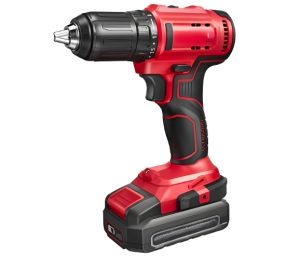Our Location
304 North Cardinal St.
Dorchester Center, MA 02124

Cordless drills have revolutionized the way DIY enthusiasts and professionals approach drilling tasks. Unlike their corded counterparts, cordless drills offer unmatched convenience, allowing users to work without the constraint of a power cord. One of the critical specifications of a cordless drill is its voltage, which directly impacts its performance, efficiency, and suitability for different tasks. This guide explores the various voltage options available for cordless drills, their advantages, and considerations for choosing the right voltage for your needs.
Voltage is a measure of the electric potential difference and is often considered an indicator of a cordless drill’s power. Higher voltage generally means more power, allowing the drill to perform more demanding tasks. Cordless drills typically come in a range of voltages, including but not limited to 12V, 18V, 20V, and 24V. Each voltage level has its unique characteristics and applications.
12V cordless drills are among the most compact and lightweight options available. They are ideal for light-duty tasks such as assembling furniture, drilling small holes, and driving screws into softer materials. The primary benefits of 12V drills include:
However, 12V drills may struggle with more demanding tasks such as drilling into hard materials like concrete or large-diameter drilling.
18V and 20V cordless drills are the most popular choices for both DIY enthusiasts and professionals. They strike a balance between power and portability, making them suitable for a wide range of tasks. Key features include:
18V and 20V drills are often seen as the best all-around choice, providing enough power for most tasks without being excessively heavy or cumbersome.
For the most demanding applications, high voltage cordless drills (24V and above) are the go-to option. These drills are designed for heavy-duty tasks and professional use. Their advantages include:
The trade-off for high voltage drills is their weight and size, which can make them less convenient for prolonged use or for tasks requiring precision in tight spaces.

When selecting a cordless drill, the voltage is a crucial factor, but it should not be the only consideration. Here are other important factors to keep in mind:
Consider the nature of the tasks you will be performing. For light-duty tasks such as assembling furniture or installing shelves, a 12V drill might suffice. For more intensive tasks like home renovation or construction work, an 18V or 20V drill is likely more appropriate.
Higher voltage drills tend to be heavier and bulkier. If you need a drill for extended use or in awkward positions, the weight and ergonomics of the tool are critical. A lighter, more compact drill will reduce fatigue and improve maneuverability.
The type and capacity of the battery also play a significant role. Lithium-ion batteries are the standard in modern cordless drills, offering better performance and longer life than older technologies. Consider the battery’s amp-hour (Ah) rating, as higher Ah batteries provide longer run times. Additionally, check the charging time to ensure it fits your work schedule.
Higher voltage drills are generally more expensive. While it’s tempting to opt for the highest voltage available, consider your budget and whether the additional power is necessary for your needs. Sometimes, a mid-range voltage drill offers the best value for money.
Reputable brands often offer better build quality, more reliable performance, and comprehensive warranties. Investing in a well-known brand can provide peace of mind and ensure better customer support if issues arise.
Choosing the right voltage for your cordless drill is essential for achieving optimal performance and efficiency. While 12V drills are perfect for light-duty tasks and offer excellent portability, 18V and 20V drills provide a balance of power and versatility suitable for a wide range of applications. For the most demanding tasks, high voltage drills (24V and above) deliver maximum power and durability.
Ultimately, the best cordless drill voltage depends on your specific needs, the nature of the tasks you will be performing, and your budget. By carefully considering these factors, you can select a cordless drill that will serve you well and help you tackle any project with confidence.
